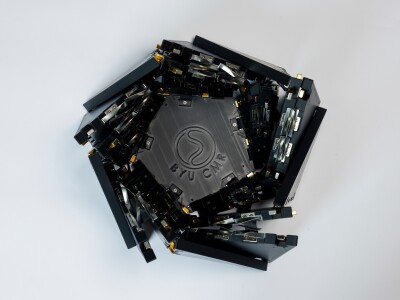Unlikely solution comes from Ph.D. student who also moonlights as a standup comedian
BYU electrical engineering students have stumbled upon a very unconventional method that could speed up lab-on-a-chip disease diagnosis.
When someone goes to the hospital for a serious illness, if a bacterial infection is suspected, it can take up to three days to get results from a bacteria culture test. By then, it is often too late to adequately treat the infection, especially if the bacteria are resistant to common antibiotics.
BYU students are working on a project to diagnose antibiotic resistant bacteria, or superbugs, in less than an hour. Their method relies on extracting bacteria from a blood sample and then pulling DNA from that bacteria. If specific genetic codes indicating antibiotic resistance are present in the DNA, fluorescent molecules can be attached to these sites. Laser light can then be shined on the DNA samples and the molecules will light up.
The required precision of aligning the laser light to miniscule DNA samples is complex and leaves little room for error. The BYU research team, led by Dr. Aaron Hawkins
“We were struggling for many months until a student suggested we try a matte fingernail polish over a layer of the photoresist we normally use to build chips in our cleanroom,” Hawkins said. “It sounded crazy and a little funny, but after some trial and error, it turned out to work very well.”
When the unlikely suggestion came up, study lead author and Ph.D. candidate Matt Hamblin decided it was worth a try since nothing else was working.
“I tried so many complicated light-interference-based methods, but nail polish did the trick,” said Hamblin, who also happens to be a part of BYU's standup comedy club, Humor U. “It’s kind of funny because it first came up as a joke, but sometimes complicated problems can be fixed with simplistic solutions.”
The nail polish creates a dark film over the chip that absorbs and scatters light to produce a “blackout” layer. This blackout layer blocks out light over most of the chip’s area but allows it to pass through miniscule openings aligned to fluid containing channels. With the presence of the blackout layer, a large beam of laser light can be shined onto the chip with crude alignment tolerances and laser energy only reaches the critical spots that lead to DNA identification.
“The nail polish blocks light from parts of the device we don't want to be illuminated,” Hamblin added.
The matte nail polish makes this process of testing for diseases more accessible and practical in an instrument that could be used in a real hospital setting. The nail polish technique is flexible and can be used on a variety of surfaces.
The research is published in the Journal of Micro/Nanolithography, Mems, and MOEMS.








